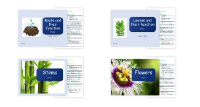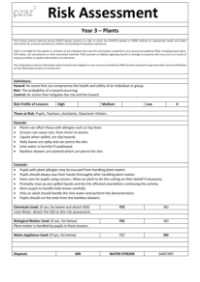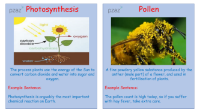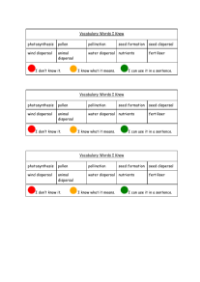Plants - Knowledge Organisers

Science Resource Description
By the end of this unit on plants, students will have a comprehensive understanding of the functions of different parts of flowering plants. They will learn that the brightly coloured petals of a flower are designed to attract pollinators such as bees, which are essential for the transfer of pollen needed for seed production. The process of a seed developing into a new plant is known as germination. Students will also discover how leaves play a crucial role in photosynthesis, using carbon dioxide and sunlight to produce food, while stems serve as conduits for water and nutrients from the roots to the rest of the plant, and help the plant to remain upright to optimise sunlight absorption. Roots are vital for anchoring the plant in the soil and absorbing water and nutrients.
The unit will also cover the various requirements for plant growth, including air, water, sunlight, soil nutrients, space, and an appropriate temperature, noting that different plants have varying needs. Students will explore how water is transported within plants, from the absorption by the roots to distribution through the stem. The life cycle of flowering plants will be demystified as students learn about the role of flowers in creating seeds through the process of pollination and fertilisation, followed by the dispersal of seeds to enable the cycle of germination to begin anew. The unit is designed to build on existing knowledge about living and non-living things, common plant identification, plant structures, and the interdependence of plants and animals, enriched by a vocabulary list that includes terms such as 'germination', 'pollination', and 'fertilisation'.







